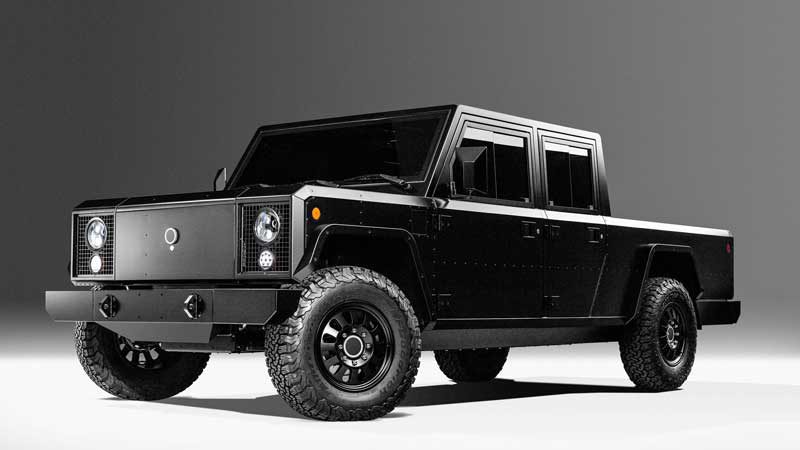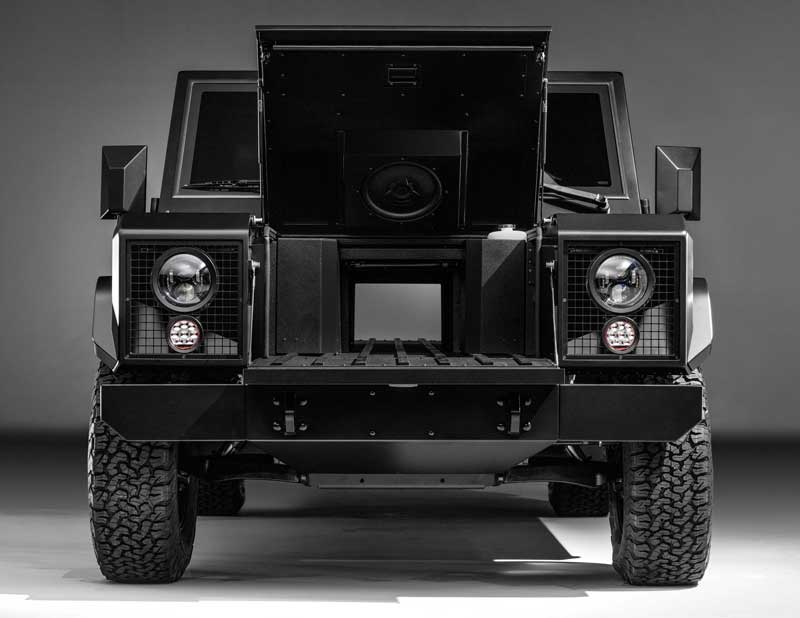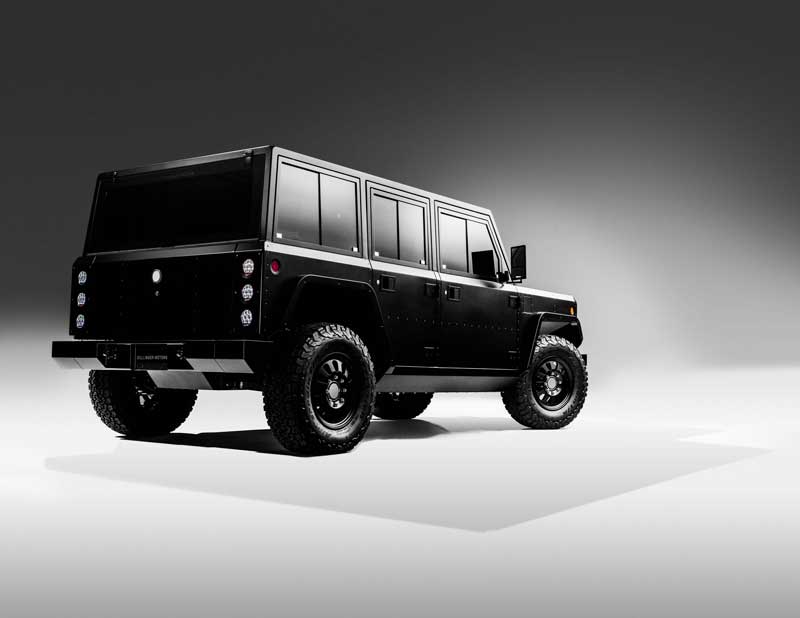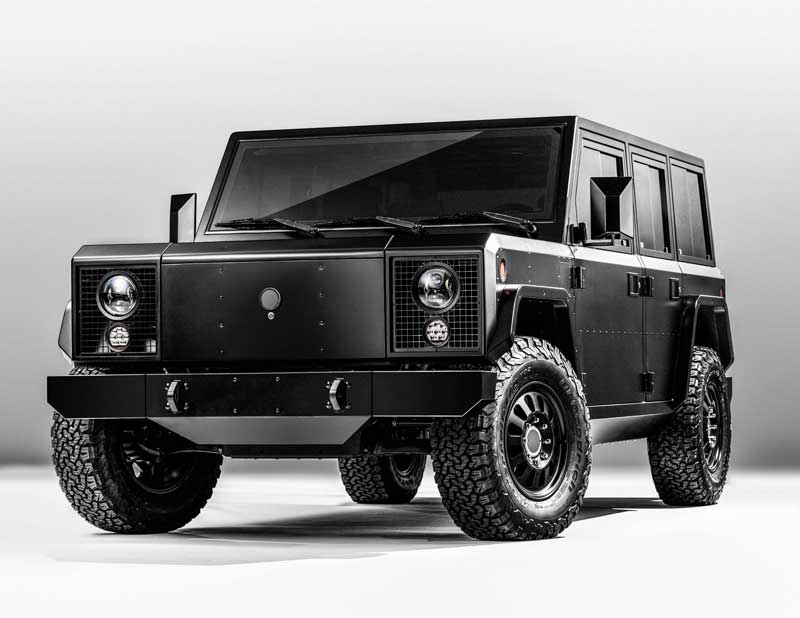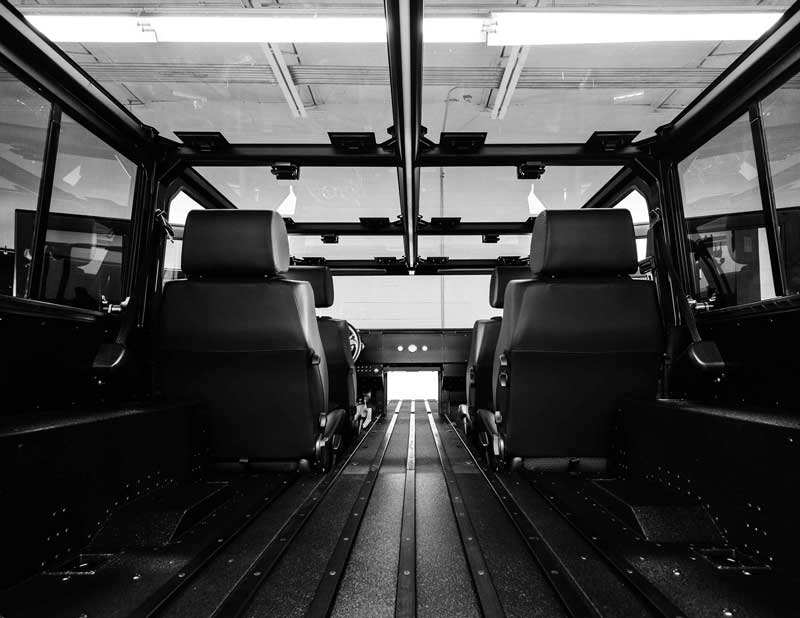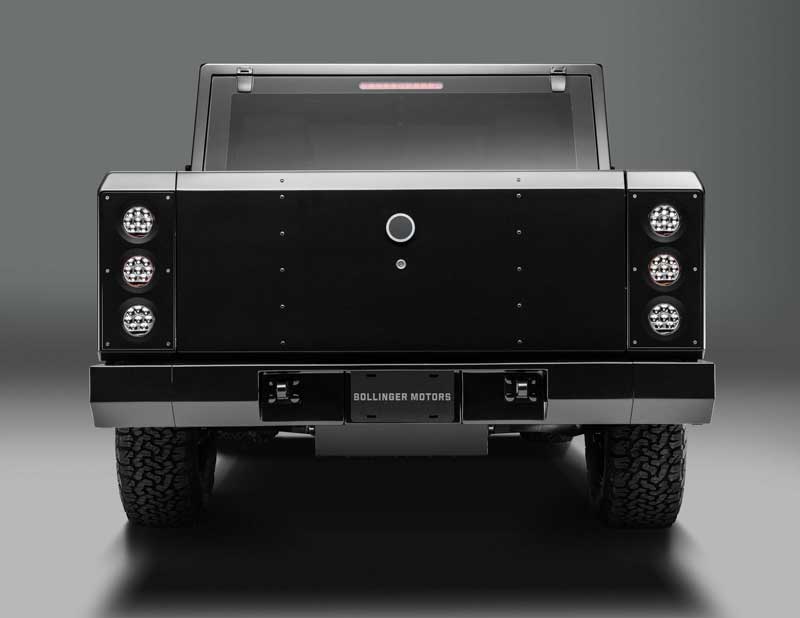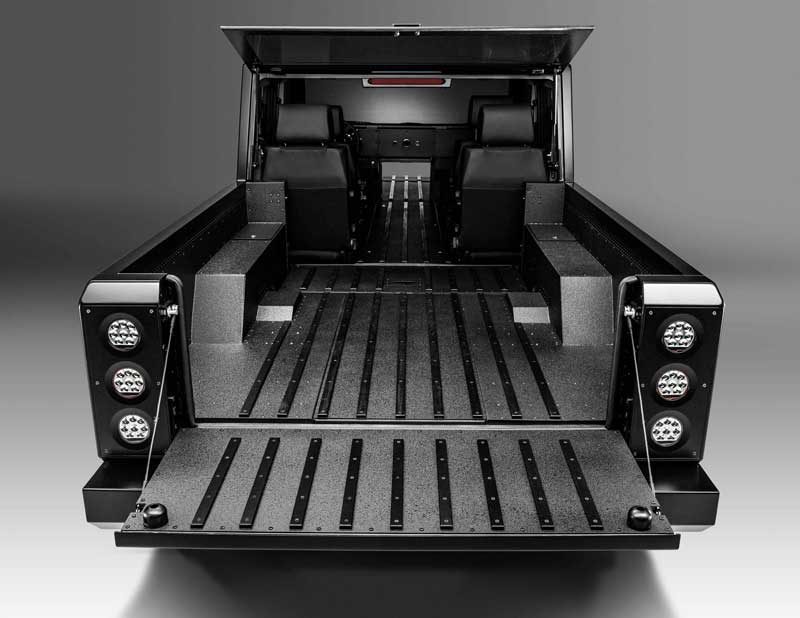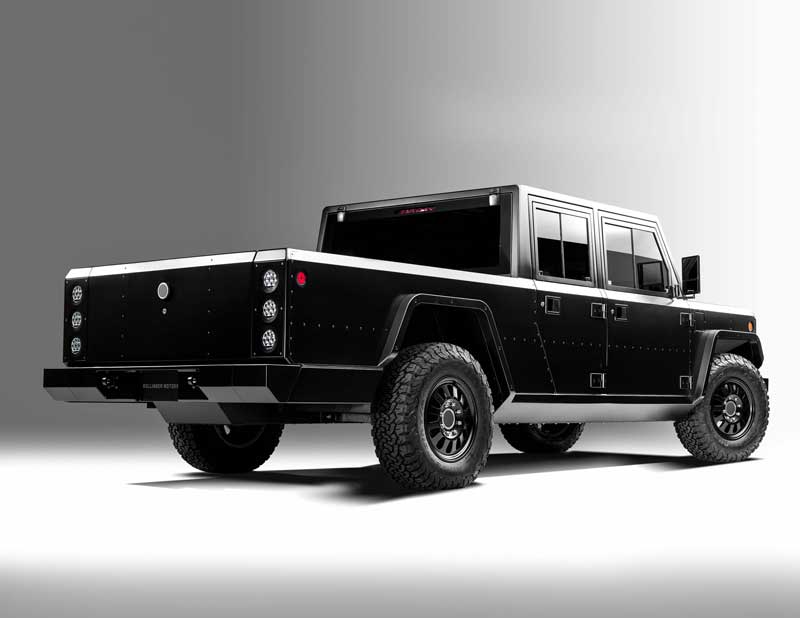Electric vehicles have long suffered from a reputation for being cutesy around-towners, but as the shift towards electricifcation spawns more and more startups keen to claim a spot in the transition limelight, this misconception is being increasingly debunked.
Tesla has led the charge, starting with its Model S (which incidentally was first unveiled just on eight years ago today), Model X and now its market-busting Model 3, and the soon to be unveiled Tesla Ute.
But other startups such as Michigan’s Rivian with its gutsy R1S SUV and R1T pickup (aka ute) are also taking the idea of creating seriously rugged EVs to the max.
The latest to reveal its answer to cleaning up week0end and week- day emissions is Detroit-based EV startup Bollinger Motors, which has gone live with an unveil for its heavy duty B1 and B2 electric sports utility trucks.
First impressions are that these vehicles, one of which has an enclosed tray and the other an open tray, will grab the eye of those with a serious amount of cash and a penchant for everything American – big, brash and ballsy.
Slated for a 2020 launch, Bollinger are clearly aiming to match Rivian in terms of specifications, and have opted for a utilitarian design leaning heavily early model Land Rover design.
The SUV-style B1 is the shorter of the two coming in at 4.35m, and will have a rear and front axle motor delivering 458kW maximum output and 905Nm torque. With a 160km/h top speed and ability to tow up to 3.4 tonnes, this is some serious staying power.
The open tray B2 tops the B1 with a 5.27m body length, 1.83m tray that can be extended to 2.44m, and offers the same specs in terms of power output, motors, top speed and torque.
Both also carry the same 120 kWh battery pack offering an estimated 321km range based on EPA testing. This is where Bollinger falls short on the various battery pack sizes that Rivian is planning to offer (it will offer up to a 180kWh battery pack, with a touted 640km estimated range).
Both 4-seater vehicles are truly designed for outdoor adventure, with a gap between the seats that extends all the way to the front of the bonnet so that over-long items can be transported with ease.
Inside the vehicles, the instrument panel has the same utilitarian Land Rover feels, but thankfully this has not carried over into the seating design, which appears suitably padded.
There hasn’t been any pricing announced as yet, but if Bollinger want to pit its B1 and B2 against the R1S and R1T, Rivian’s starting price for the R1S is $US69,000 ($A102,800 at today’s rates).
It would be nice to see it priced lower however, given the simple flat panel build and ready-to-roll no-nonsense interior.
No word either on if it will come to Australia…although it may beat the R1S and R1T Rivian, which has just accepted an unenviable order of 100,000 EV vans from retail giant Amazon, to market. Keep an eye on more from this one as we approach 2020.

Bridie Schmidt is associate editor for The Driven, sister site of Renew Economy. She has been writing about electric vehicles since 2018, and has a keen interest in the role that zero-emissions transport has to play in sustainability. She has participated in podcasts such as Download This Show with Marc Fennell and Shirtloads of Science with Karl Kruszelnicki and is co-organiser of the Northern Rivers Electric Vehicle Forum. Bridie also owns a Tesla Model Y and has it available for hire on evee.com.au.


